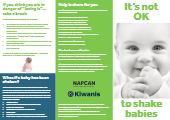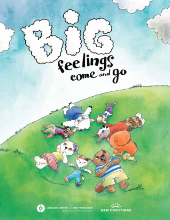(You can download the guidance below in a PDF document here.)
SOCIAL WORKER’S QUESTIONS FOR EACH ADULT WHO WAS PRESENT DURING THE INJURY
In situations involving a concerning child injury, it is essential to determine the circumstances surrounding the incident. When speaking to each adult present, consider the following:
- When was the child last completely well?
- What date, time and at which location did the injury happen?
- What was happening before the injury?
What was the child doing?
Where was the caregiver just before the injury, and what were they doing? When did they notice the injury?
Were there others nearby? If yes, where were they before the injury, and what were they doing? When did they notice the injury? - Exactly how did the injury happen? Request specific details about objects involved or actions taken. Can the adult(s) demonstrate/act out how exactly it occurred?
- What did the injury look like right after it happened? How has it changed since? Describe its current appearance, including size, colour, and location. If possible, take a photo.
- What did the child do after the injury?
- What actions did the caregiver take immediately after the injury?
- What did other adults present do immediately after the injury?
- Did they seek medical help or try any remedies? If yes, how much time passed before seeking help, and was it effective?
When an adult caused the injury:
- Could you help me understand what led to the actions that caused harm to the child?
- How did you feel when you saw the child got hurt?
- How have you been feeling since that happened?
- What do you think about what happened now?
- Do you believe you handled the situation in the right way?
- If you don’t think you did, what will you do differently if faced with a similar situation in the future?
CHILD’S INTERVIEW
For older children, use age-appropriate language and open-ended questions, attempting to obtain answers to the questions outlined above. If the child feels comfortable, ask them to demonstrate exactly how it happened.
For younger or hesitant children, consider engaging them in the following activity:
INJURY EXPLORATION ACTIVITY WITH A CHILD: BODY OUTLINE
Materials required: Flipchart paper, sellotape, colourful markers, and preferably play-doh, or blue tac, although this is not essential.
The activity:
- Setting up the Environment: Locate a calm and comfortable space where the child feels safe and relaxed, ensuring there are minimal distractions.
- Creating a Body Outline: Join sheets of flipchart paper to create a surface larger than the child. Place it on the floor. Ask the child to lie down on the paper. With a marker, gently trace the outline of the child’s body.
- Adding Features: Put the child at ease by asking them to add features to their body outline, such as hair, ears, eyes, nose, mouth, and clothing. Promote creativity and allow them to express themselves.
- Asking Questions to Comfort the Child and Learn More: Point to different body parts and ask open-ended questions, for instance:
“What are your hands good at?”
“What are your legs good at?”
“What are the things your eyes like to see the most?”
“Are there any sounds or noises your ears often listen to but you don’t like them?”
- Simulating the Injury: Mold a piece of play-doh or blue tac to resemble the size and shape of the injury. Place it on the relevant part of the body outline where you know the child has the injury. If you don’t have play-doh or blue tac, simply mark it on the child’s body outline with a highlighter.
- Encouraging Self-Expression: Provide the remainder of the play-doh/marker to the child and ask if they have any other bruises or hurts. Encourage them to mark these on their body outline using the play-doh.
- Exploring Past Injuries: Inquire if the child has experienced any other bruises or hurts in the past and invite them to mark those on the body outline as well.
- Asking Open Questions: While they engage in this activity, ask open questions to gather as much information as possible about the injury. If appropriate, ask the child to demonstrate how exactly the injury happened. Use language appropriate to their age and ensure the child feels comfortable sharing their feelings and experiences.
- Listening and Recording: Actively listen to what the child shares and document their responses.
This activity offers a child-friendly way to encourage conversation and gather details about when, where, and how the injury happened, who was present, and the actions taken before, during, and after the injury.
Always remember to maintain a supportive and non-pressuring approach throughout the activity, prioritising the child’s comfort and well-being.
INTERVIEWING OTHER CHILDREN WITNESSING THE INJURY
When speaking to other children who witnessed the injury, use age-appropriate language and open questions to gather details about when, where, and how the injury happened, who was present, and the actions taken before, during, and after the injury.
CHECKLIST TO CONSIDER THE SPECIFIC INJURY
During your investigation, consider the following:
- Were there any previous times when the child got hurt or people were worried about the child’s safety?
- Does the child have any known medical conditions or allergies that might be important to this injury?
- Are there any cameras or recordings nearby that might have captured what happened?
- Are there any objects or equipment in the environment that could have contributed to the injury, such as unsafe furniture or sharp objects?
- Have there been any changes in the child’s behaviour or emotional well-being since the injury?
OVERALL ASSESSMENT AREAS WHEN CONCERNED ABOUT THE NATURE/SIGNIFICANCE OF THE INJURY
Apart from
- The actual current and past harm to the child and its impact on the child
your overall assessment should also consider:
- Parental characteristics
- Child characteristics
- Parents’ relationship
- The quality of the parent-child relationship
- Levels and nature of family and social stresses
- Availability of extended family and professional support
- The parents’ motivation and ability to make changes and utilise help and support when deemed necessary to address the child’s needs and mitigate identified risks.








